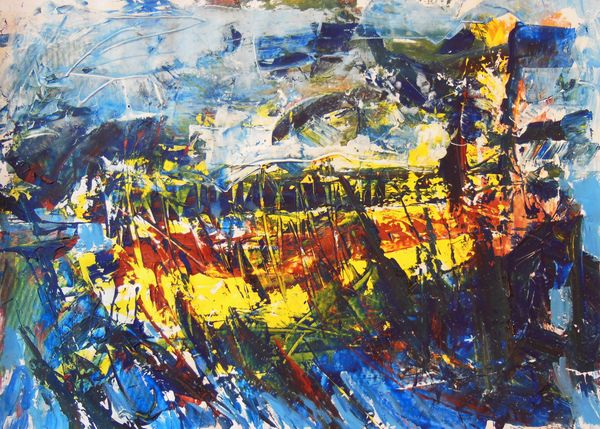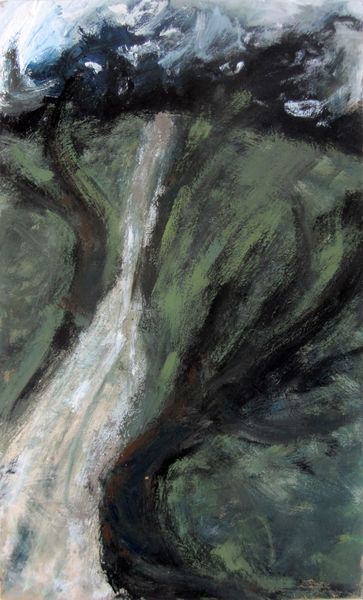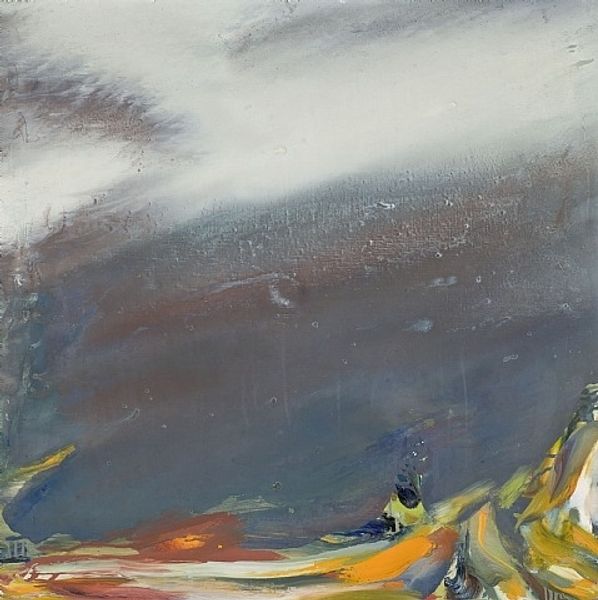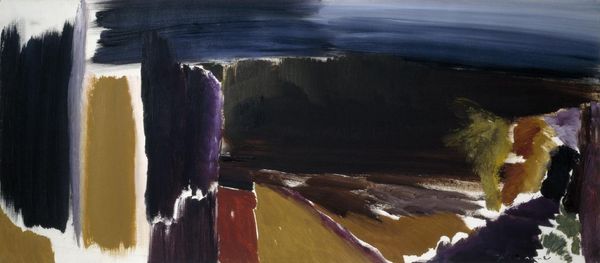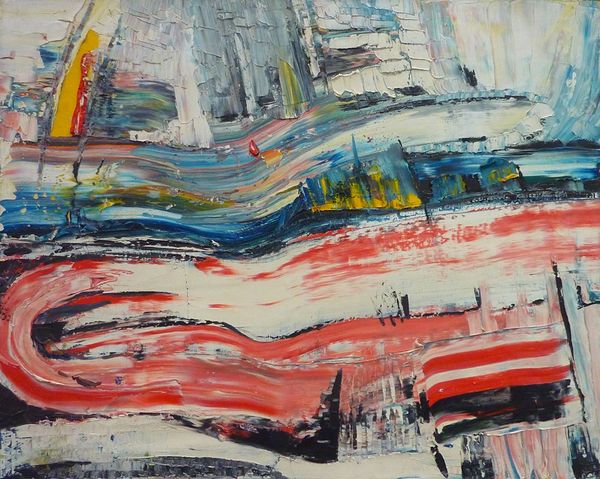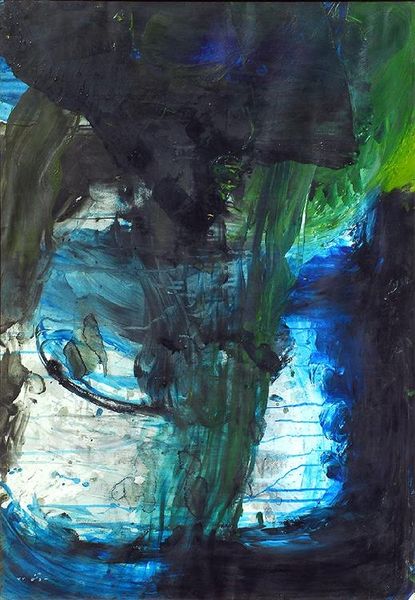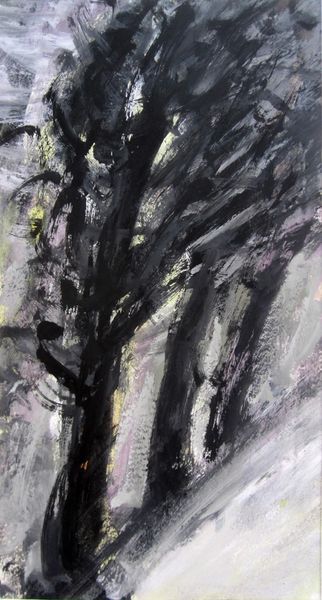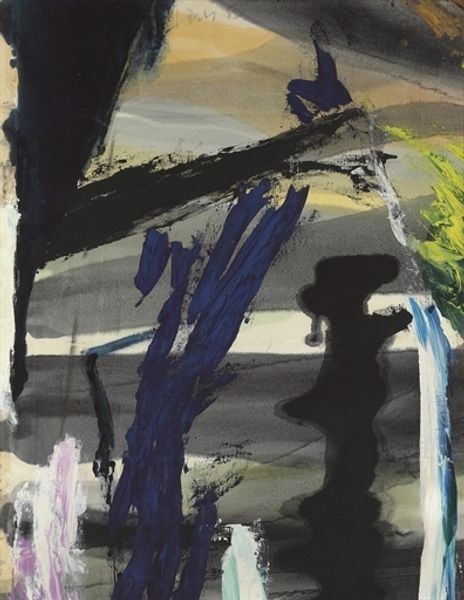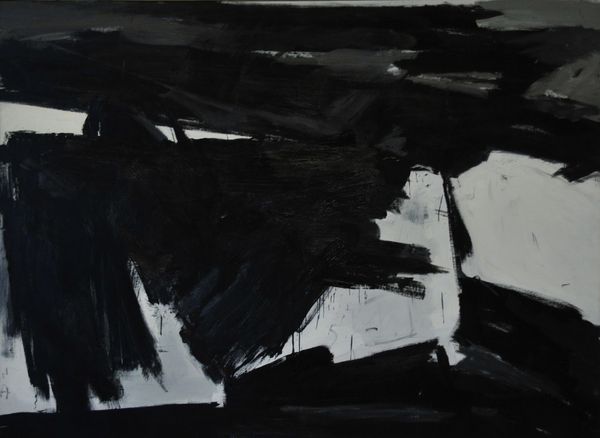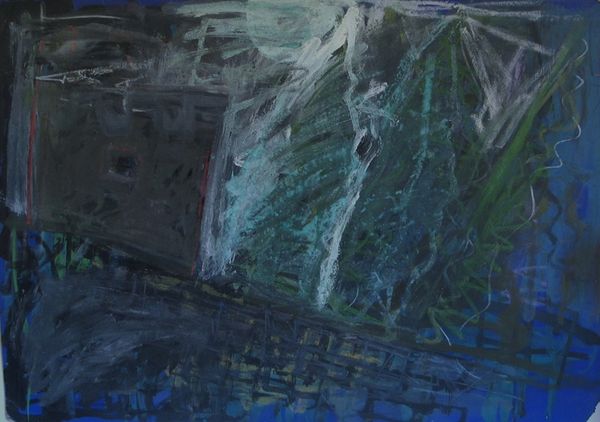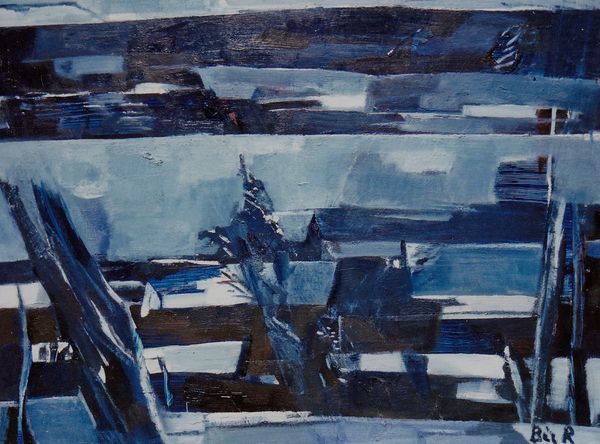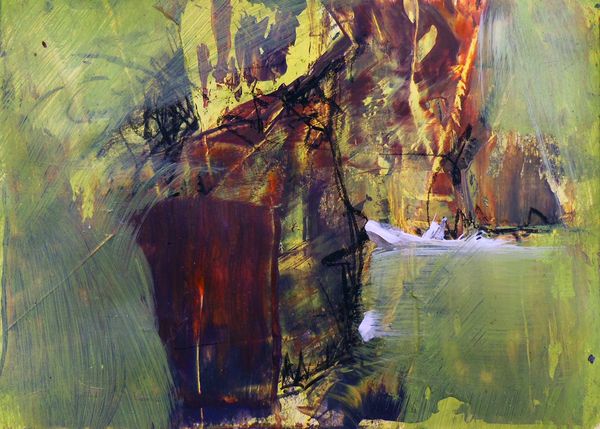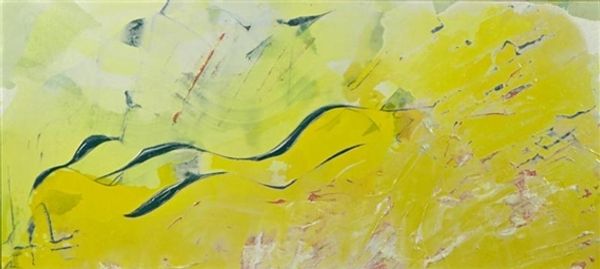
Copyright: Francois Arnal,Fair Use
Curator: This painting, titled "Se Mouiller pour moi," meaning "Get Wet for Me", was crafted by Francois Arnal in 1958. He worked with oil paint, creating what could be described as matter painting. Editor: Immediately, I’m struck by the energy—it feels restless, even a little bit violent. The thick application of paint creates a real sense of texture, a physicality that contrasts sharply with any clear representational content. Curator: Arnal's work came about in post-war France, during a period when artists were grappling with ways to express deep-seated societal anxieties. Considering this historical context, this energetic application of paint becomes more than just a stylistic choice. Could it reflect the instability and search for new foundations after the war? Editor: I think there's definitely an argument there, viewing the fractured compositions through a Post-Impressionistic lens and through Abstract Expressionism allows one to see Arnal’s abstraction not as mere decoration, but as a renegotiation with a changed and charged world, in search of fresh frameworks for conceiving how to belong in this world. Is he almost reflecting, dare I say, climate anxieties way ahead of their time? Curator: Interesting reading. Arnal presented this in an epoch dominated by the rise of consumer culture and mass media, so how do you view this sort of individualist expressive approach by the artist towards commercialization and alienation that defined the social context of the time? Editor: I am reminded that these art forms were inherently gendered. Male artists were usually at the fore creating powerful artworks; could this also act as a comment of the dominant patriarchal structure? Are we supposed to see his powerful movements across the canvas to represent his individual power? The title definitely gives a sensual edge, I wonder who is supposed to get wet. It would need additional interrogation from various feminist lenses. Curator: Perhaps, but it’s important to be cautious about imposing contemporary sensibilities wholesale on the art of the past. This moment laid the foundation for shifts in contemporary art to comment on cultural constructs and societal change. Arnal can also be seen as a precursor for current activists employing art in a fight for change and acknowledgement. Editor: True, I just think Arnal’s powerful abstract expression serves to challenge our contemporary view, but the way he went about challenging structures will likely differ given how radically political statements have shifted from the past. I think interrogating that is more relevant than his initial purpose.
Comments
No comments
Be the first to comment and join the conversation on the ultimate creative platform.
